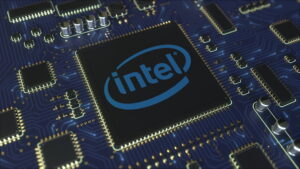For those competing in the Olympic Games, it’s always great to gain a competitive edge. Let’s delve deep into Olympic swimming. The answer lies in cutting-edge artificial intelligence innovations that are transforming the sport. AI-powered systems are revolutionizing training methods, providing unprecedented insights into technique and performance. These tools offer real-time analysis of every stroke, turn, and breath, allowing for rapid adjustments and optimizations. By harnessing the power of AI, access personalized training plans tailored to unique physiology and goals. The integration of artificial intelligence in Olympic swimming marks a new era in athletic performance, where data-driven insights propel athletes to new heights of achievement.
How AI is Revolutionizing Olympic Swimming

Artificial intelligence is making waves in the world of Olympic swimming, transforming how athletes train and compete. This cutting-edge technology is providing swimmers with unprecedented insights into their performance, helping them shave crucial milliseconds off their times.
Real-time Stroke Analysis
AI-powered systems now offer real-time analysis of swimmers’ techniques. Using advanced computer vision and machine learning algorithms, these tools can break down every aspect of a swimmer’s stroke, from hand entry to body position. This instant feedback allows athletes to make immediate adjustments, optimizing their efficiency in the water.
Personalized Training Programs
By collecting and analyzing vast amounts of data, AI can create highly personalized training programs for each swimmer. These programs consider an individual’s strengths, weaknesses, and physical characteristics to design workouts that maximize improvement. This tailored approach ensures that every minute spent in the pool is as effective as possible.
Predictive Performance Modeling
Perhaps most excitingly, AI is now being used to predict future performance based on current data. By analyzing trends in an athlete’s training and competition results, these systems can forecast potential outcomes and identify areas for improvement. This predictive capability allows coaches and swimmers to set realistic goals and fine-tune their strategies for peak performance when it matters most.
Real-Time Stroke Analysis and Feedback
AI-Powered Motion Capture
In the realm of Olympic swimming, AI has revolutionized training methods through advanced motion capture technology. High-speed cameras and sensors now track swimmers’ movements with unprecedented precision, creating detailed 3D models of each stroke. This data is instantly processed by AI algorithms, providing coaches and athletes with real-time insights into technique, efficiency, and potential areas for improvement.
Personalized Performance Metrics
AI systems analyze numerous parameters simultaneously, from stroke rate and length to body position and kick strength. These metrics are compared against ideal models and the swimmer’s historical data, offering personalized feedback tailored to each athlete’s unique physiology and style. Coaches can now pinpoint micro-adjustments that may lead to significant performance gains, helping swimmers optimize every aspect of their technique.
Immediate Feedback Mechanisms
Perhaps most importantly, AI enables immediate feedback during training sessions. Swimmers receive audio cues through waterproof earpieces or visual prompts on poolside screens, allowing them to make instant corrections. This real-time guidance accelerates the learning process, helping athletes internalize proper techniques more quickly and effectively than traditional coaching methods alone.
Personalized Training Programs and Regimens
Artificial intelligence is revolutionizing the way Olympic swimmers train, offering unprecedented levels of personalization and precision. By leveraging AI-powered analytics, coaches can now craft tailor-made training programs that address each athlete’s unique strengths and weaknesses.
Data-Driven Insights
AI systems analyze vast amounts of data from various sources, including wearable devices, underwater cameras, and performance metrics. This comprehensive approach allows for a deeper understanding of an athlete’s technique, endurance, and recovery patterns. Coaches can then use these insights to fine-tune training regimens, optimizing every aspect of a swimmer’s performance.
Real-Time Feedback and Adjustments
One of the most significant advantages of AI in swimming training is the ability to provide real-time feedback. Sensors and smart devices can detect minute changes in a swimmer’s form, stroke efficiency, and speed. This immediate feedback allows athletes to make instant adjustments, accelerating their learning curve and minimizing the risk of developing poor habits.
Predictive Analytics for Peak Performance
AI algorithms can predict an athlete’s potential performance based on historical data and current progress. This predictive capability enables coaches to design training programs that ensure swimmers reach their peak performance at precisely the right moment – during crucial competitions like the Olympics. By optimizing training intensity and recovery periods, AI helps minimize the risk of burnout or underperformance when it matters most.
Optimizing Technique and Stroke Efficiency
AI-Powered Stroke Analysis
AI systems are revolutionizing the way Olympic swimmers refine their techniques. By utilizing advanced computer vision and machine learning algorithms, these tools can analyze every aspect of a swimmer’s stroke in real-time. High-speed cameras capture the athlete’s movements, while AI processes this data to identify areas for improvement. This technology allows coaches and athletes to pinpoint inefficiencies in body positioning, arm rotation, and kick strength that might be imperceptible to the human eye.
Personalized Performance Metrics
One of the most significant advantages of AI in swimming is its ability to generate personalized performance metrics. These systems can track a swimmer’s speed, stroke count, and underwater dolphin kicks with unprecedented accuracy. By analyzing this data over time, AI can identify patterns and suggest tailored adjustments to improve efficiency. For example, it might recommend changes in breathing technique or arm recovery to reduce drag and increase propulsion.
Real-Time Feedback and Adaptive Training
Perhaps the most exciting application of AI in Olympic swimming is the provision of real-time feedback during training sessions. Wearable sensors and poolside displays can offer immediate insights, allowing swimmers to make micro-adjustments on the fly. This instant feedback loop accelerates the learning process, enabling athletes to internalize improvements more quickly. Moreover, AI can adapt training regimens based on an individual’s progress, fatigue levels, and physiological data, ensuring optimal performance gains while minimizing the risk of injury.
The Future of AI in Competitive Sports
As artificial intelligence continues to revolutionize Olympic swimming, its impact is poised to extend far beyond the pool. The future of competitive sports across disciplines is likely to be shaped by AI-driven innovations, transforming how athletes train, compete, and push the boundaries of human performance.
Personalized Training and Recovery
AI algorithms will increasingly tailor training regimens to individual athletes’ strengths, weaknesses, and recovery needs. By analyzing vast amounts of biometric data, these systems will optimize workout intensity, duration, and frequency, minimizing injury risk while maximizing performance gains.
Real-Time Performance Optimization
During competitions, AI-powered wearables and sensors will provide athletes with instant feedback on their technique, form, and physiological state. This real-time data will enable split-second adjustments, potentially shaving crucial milliseconds off race times or improving execution in judged events.
Predictive Analytics and Strategy
Coaches and teams will leverage AI to analyze opponents’ patterns, predict likely strategies, and develop counter-tactics. This data-driven approach to game planning could revolutionize team sports, leading to more dynamic and strategic competitions.
As AI continues to evolve, its integration into competitive sports will undoubtedly raise ethical questions and challenges. However, the potential for AI to enhance athletic performance, reduce injuries, and create more engaging spectator experiences suggests that this technological revolution in sports is only just beginning.
In Conclusion
As you consider the impact of AI on Olympic swimming, it’s clear that this technology is reshaping the sport’s landscape. By embracing these innovations, you position yourself at the forefront of athletic excellence. The integration of AI in training regimens offers unprecedented opportunities for performance enhancement and data-driven decision-making. As the technology continues to evolve, its influence on competitive swimming will only grow. To stay competitive in this rapidly changing environment, you must remain open to adopting these AI-powered tools and strategies. The future of Olympic swimming lies in the harmonious blend of human potential and artificial intelligence, promising even more remarkable achievements in the pool.
More Stories
Starlink and OneWeb Gear Up to Transform South Korea’s Telecom Terrain
South Korea is entering the low Earth orbit (LEO) satellite communications field with strong government support for SpaceX’s Starlink & Eutelsat OneWeb.
AI-Driven Data Governance: Snowflake’s Strategic Investment in Theom
Demands for strong governance frameworks is rising; Snowflake’s support of Theom highlights importance of integrating AI-native platforms.
Broadcom’s Bold Private‑Cloud Push Shakes Up VMware Ecosystem
By championing VCF, Broadcom aims to reshape the cloud ecosystem with complete, integrated solutions. Moreover, this aligns with rising enterprise demand for private clouds offering top performance, better security, and steady costs.
Mumbai’s Digital Pivot: Bollywood IT Park Becomes NTT’s Data Center Powerhouse
Recently, NTT Global Data Centers & Cloud Infrastructure India made a notable ₹855 crore acquisition. It purchased the Bollywood, Balaji IT Park from the iconic Kapoor family.
FinOps Foundation Amplifies Cost Controls Across Cloud, SaaS & AI
At the FinOps X conference in San Diego, the FinOps Foundation made a major advancement. Specifically, it introduced FOCUS 1.2, the latest version of the FinOps Open Cost and Usage Specification.
Thailand’s Hyperscale Leap: Digital Edge and B.Grimm Unite for Sustainable Data Center Growth
Digital Edge & B.Grimm Power partnered up to develop a hyperscale data center campus in the Eastern Economic Corridor.


